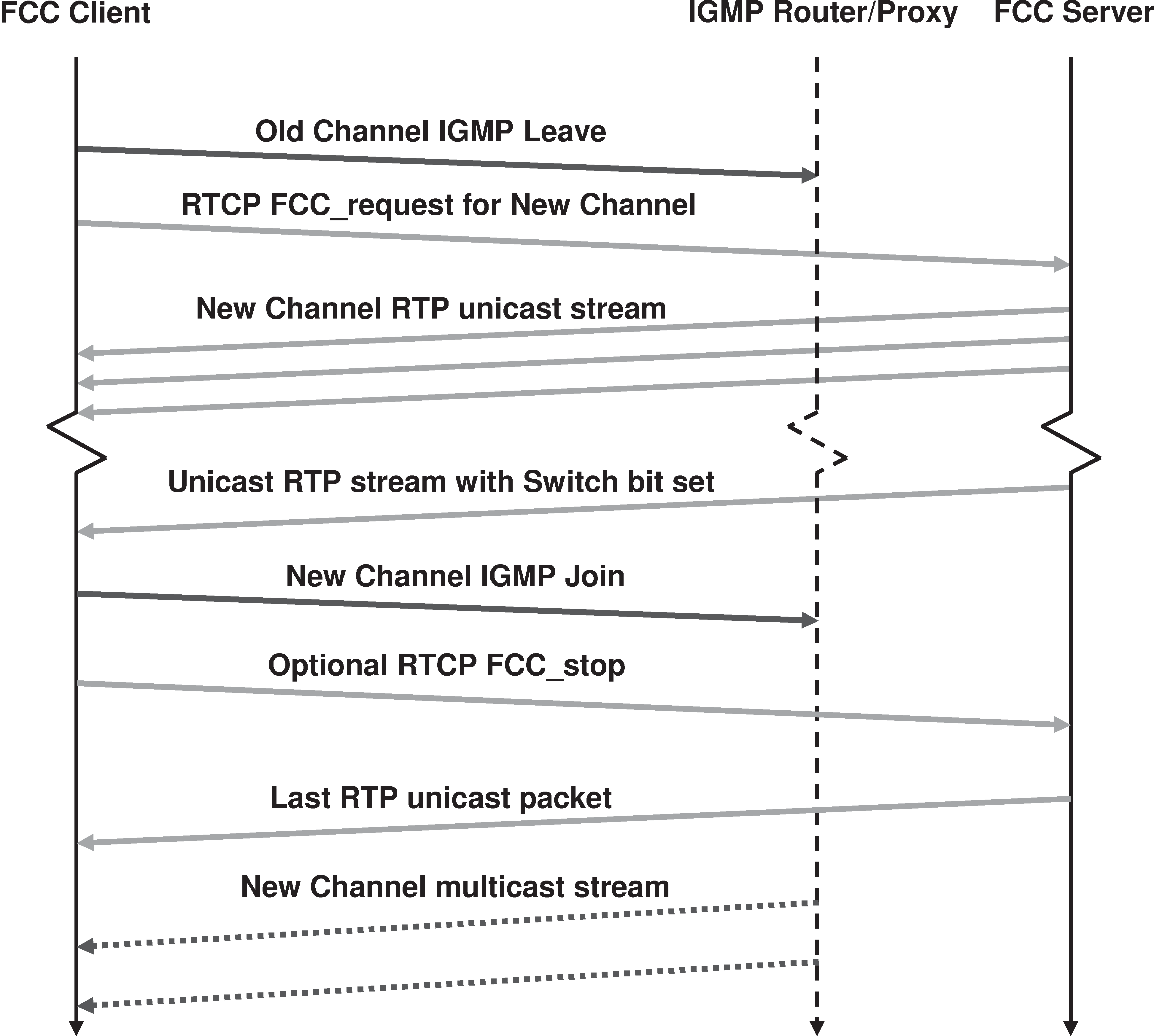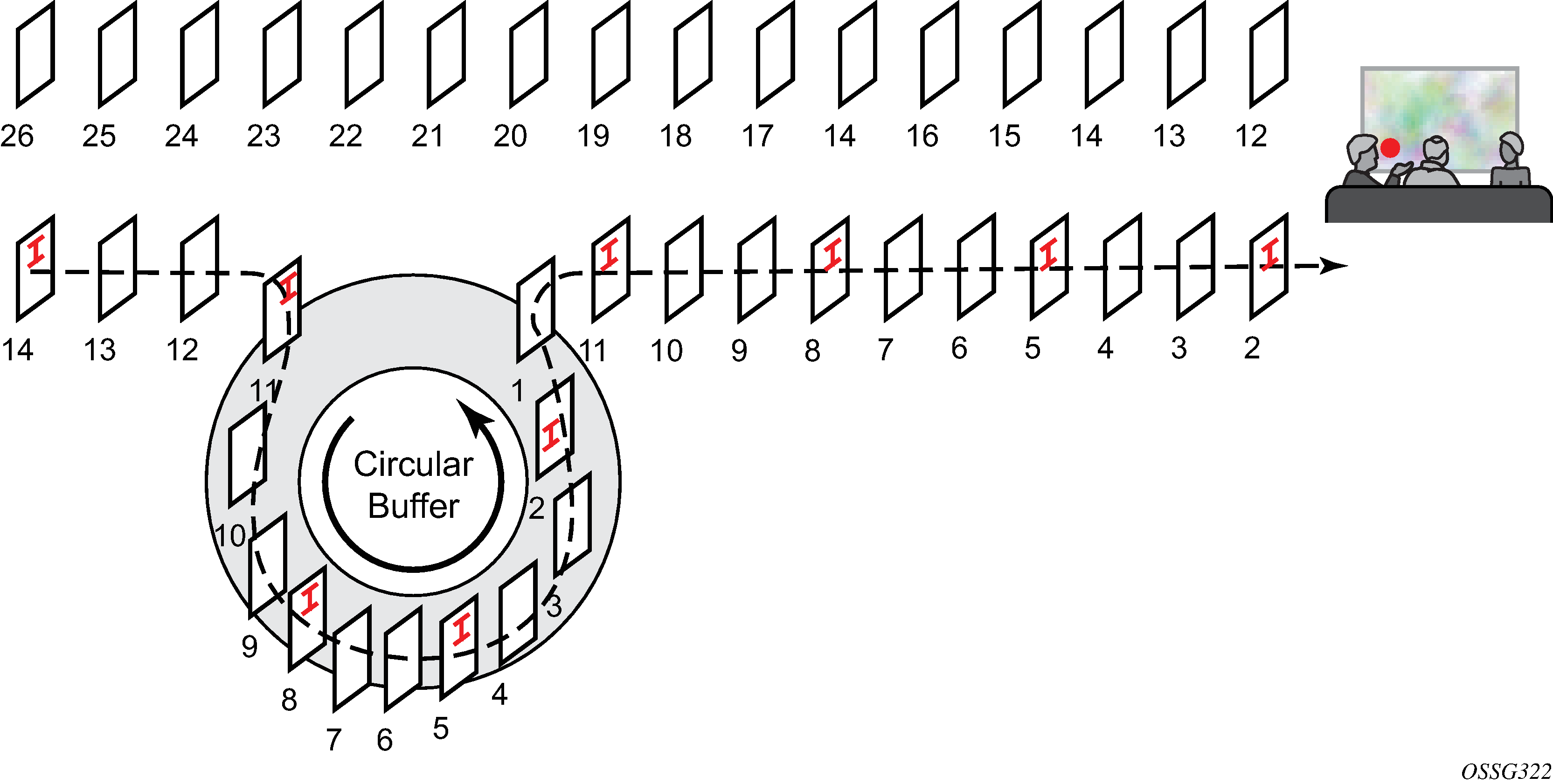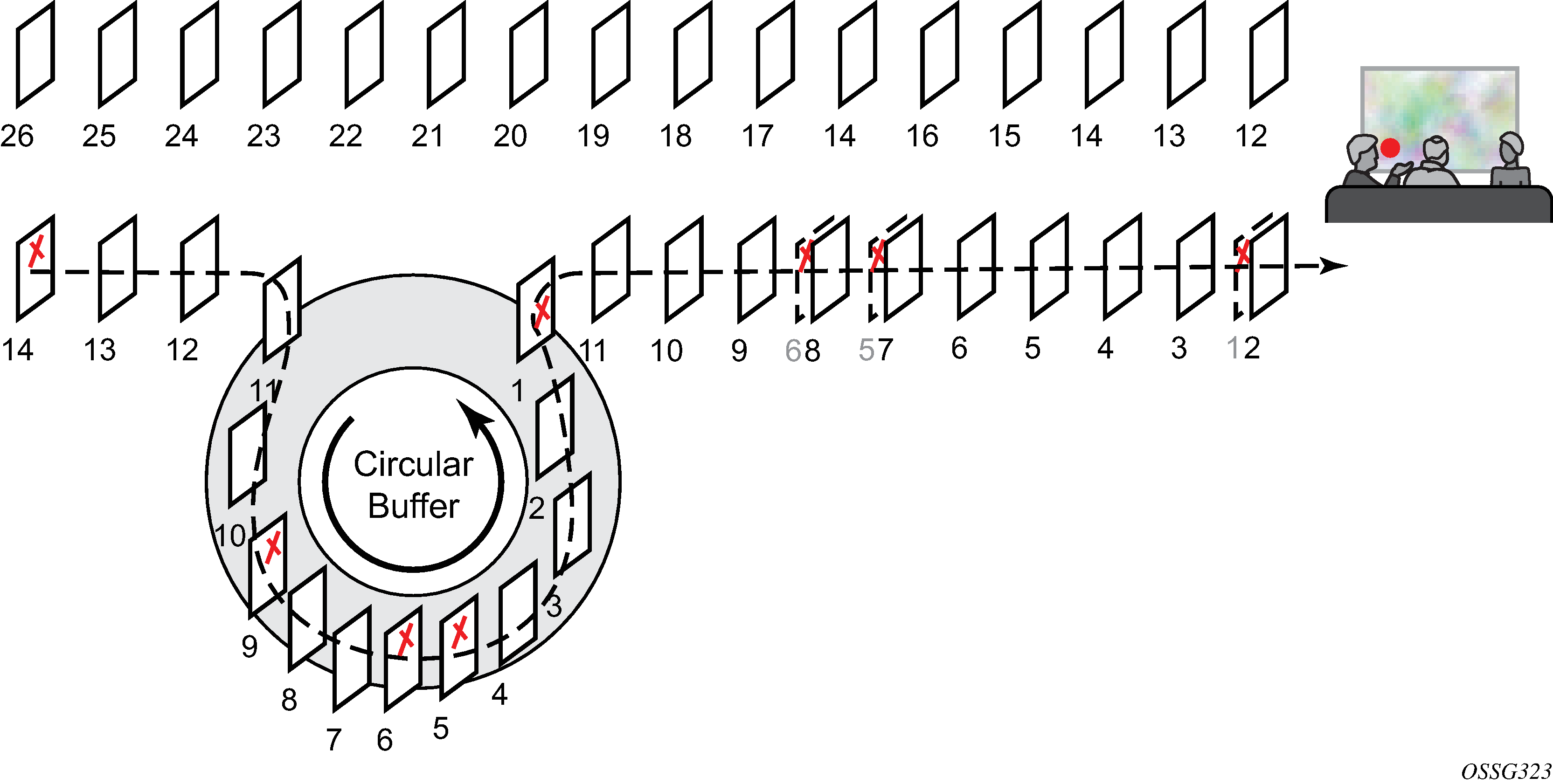FCC is an Nokia method based on a client/server model for providing fast channel changes on multicast IPTV networks distributed over RTP. During a fast channel change, the FCC client initiates a unicast FCC session with the FCC server where the FCC server caches the video stream and sends the channel stream to the FCC client starting at the beginning of a Group of Pictures (GOP). Beginning at a GOP in the past minimizes the visual channel transition on the client/STB, but the FCC unicast stream must be sent at an accelerated rate in the time domain to allow the unicast stream to catch up to the main multicast stream, at which point, the FCC server signals to the client to join the main RTP stream.
Figure: FCC client/server protocol illustrates the FCC client and server communication.

There are two techniques for compressing the FCC unicast stream in time to allow the unicast session to catch up to the multicast stream: bursting and denting. When bursting, the stream is sent at a rate faster than multicast stream, for example, the stream can be ‟bursted” at 130% (or 30% over the nominal) multicast rate. ‟Denting” is a technique where less important video frames are dropped by the FCC server and not sent to the FCC client. Hybrid mode combines bursting and denting.
Bursting is illustrated in Figure: FCC bursting sent faster than nominal rate and denting is illustrated in Figure: FCC denting removing less important frames .


When the unicast session has caught up to the multicast session, the FCC server signals to the FCC client to join the main multicast stream. The FCC server then sends the unicast session at a lower rate called the ‟handover” rate until the unicast session is terminated.
The FCC server functionality requires the Nokia 5910 Video Services Appliance (VSA) Re-Wrapper which is used to encapsulate and condition the multicast channel streams into RTP, adding important information in the RTP extension header. Also, the ISA FCC server requires an STB FCC client based on the Nokia FCC/RET Client SDK.